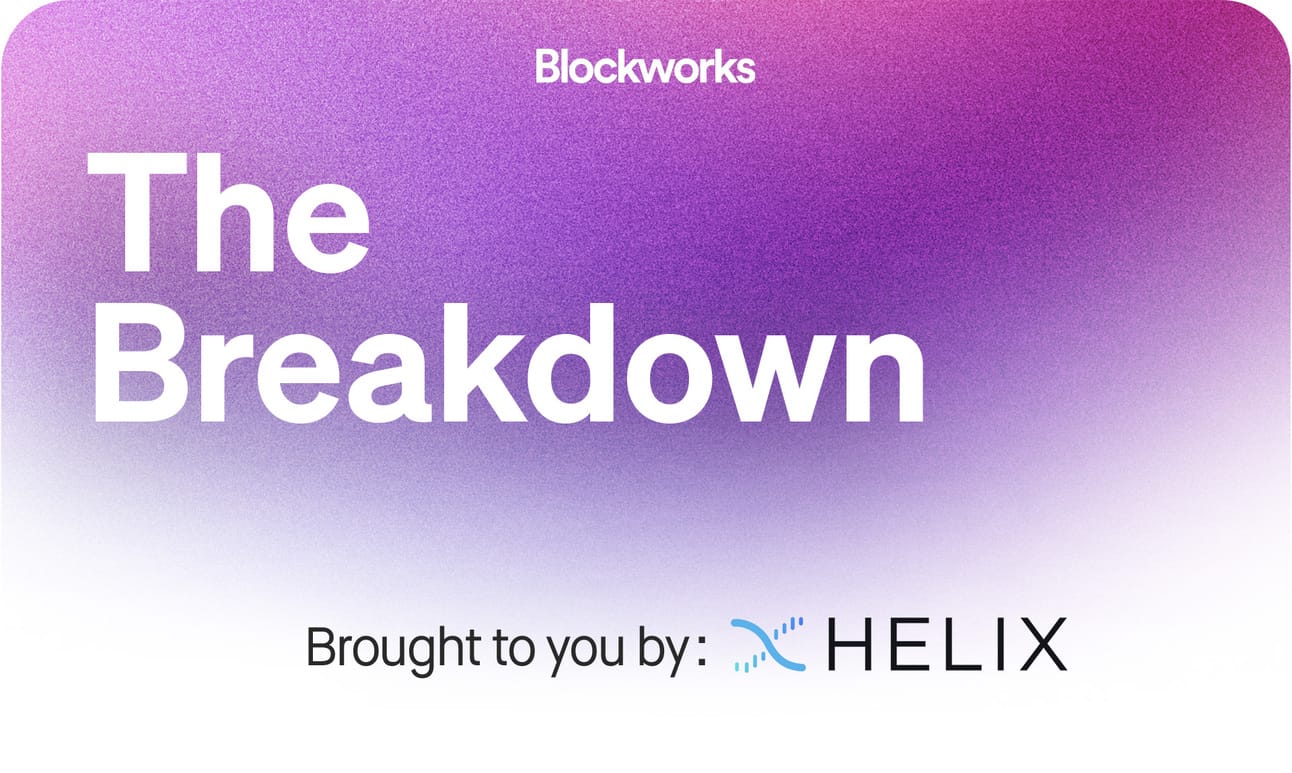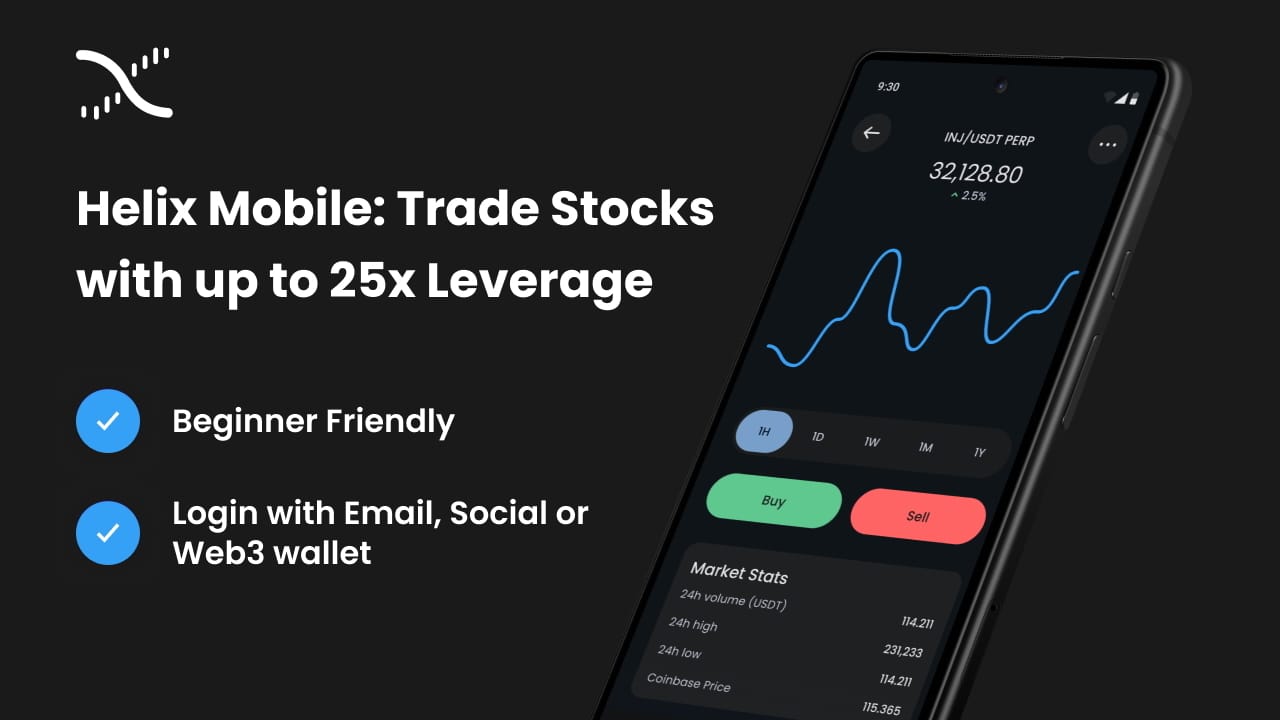- The Breakdown
- Posts
- 🟪 Thursday links
🟪 Thursday links
Blockchain stocks, barroom compliance and NFT treasuries


Thursday links: Blockchain stocks, barroom compliance and NFT treasuries
In its recent S-1 filing, Figma disclosed that it authorized the issuance of “blockchain common stock,” which it describes as “shares of our capital stock in the form of blockchain tokens.”
Figma is a SaaS company that has no vested interest in crypto, so it seems significant that it’s seriously considering issuing equity in the form of tokens.
That deliberate phrasing matters because equity in the form of tokens is fundamentally different from the “tokenized equity” that people have recently gotten excited about.
The tokenized stocks offered by Robinhood and others are less than they seem: just an onchain receipt for something that remains resolutely off-chain.
Blockchain common stock, however, is issued natively onchain: The token is the equity.
This removes counterparty risk and off-chain dependencies; enables composability (for use in DeFi), programmability (governance or compliance, say, via smart contracts); and potentially broadens access to anyone with a digital wallet.
All of which together should lower the cost of capital formation.
Tokenized stocks are a new form of recordkeeping, but blockchain stocks are a new form of capital markets.
Under the heading “Combating Criminal Activity,” a White House statement declares:
“The GENIUS Act explicitly subjects stablecoin issuers to the Bank Secrecy Act, thereby clearly obligating them to establish effective anti‑money laundering and sanctions compliance programs with risk assessments, sanctions list verification, and customer identification."
It’s overselling it. The Bank Secrecy Act will only apply to the institutions that mint and redeem stablecoins with the issuer — once the tokens are in circulation, they won’t be any more subject to compliance checks than they are now. (Which is not at all, basically.)
It’s like a bar that lets everyone drink as long as the person buying has an ID: KYC one, serve all.
It’s unlikely North Korea was planning to mint USDC with Circle, so applying the Bank Secrecy Act to stablecoins doesn’t make them as compliant as bank deposits.
This is part of what makes stablecoin payments so much cheaper than bank transfers: far fewer compliance people to pay.
The Wall Street Journal’s heartbreaking story of an elderly couple losing their entire life savings — over $5 million — to a crypto investment scam is a reminder of why bank transfers are so expensive.
The victim had to switch banks multiple times before he finally found one that would allow him to make transfers as large as $300,000. “It’s his money,” the bank reasoned.
At one of his previous banks, a compliance officer froze his account over a $1,000 transfer because “the name on the Zelle account where he was trying to send money didn’t match the name in the email address he was given.”
The victims are now suing the bank that allowed the transfers, arguing that it should have recognized their customer was being defrauded.
The story suggests most banks probably would have saved the victims from themselves, but that level of compliance is expensive.
A recent academic study reports that 82.6% of the 34,000 memecoins examined showed evidence of “extensive use of artificial growth strategies designed to create a misleading appearance of market interest.”
Strategies include wash trading, rug pulls, pump-and-dump schemes and the newly discovered “Liquidity Pool-Based Price Inflation” (or LPI).
LPI is where manipulators exploit the constant product formula (x*y=k) of low-liquidity pools on decentralized exchanges to send tokens higher with a shockingly small amount of money: The study finds that, on average, it takes just $54 to send a memecoin 500% higher.
It works for big ones too, because the liquidity in these pools are so low: 88.1% of coins with market caps above $1 billion had just 0.1% of their reported market cap in the pools.
“These findings reveal that manipulations are widespread among high-performing memecoins and suggest that their dramatic gains are often likely driven by coordinated efforts rather than natural market dynamics.”
If you’ve made money in memecoins then, it’s probably because you just happened to be on the right side of the manipulation.
GameSquare, which has a $141 million market cap, has issued $5 million of stock in return for a CryptoPunk NFT as part of “a differentiated treasury management strategy.”
Pretty smart: Crypto is undermining traditional finance from the inside.
Wired reports that Cantor Fitzgerald is paying 20% to 30% for the right to collect a refund on the new tariffs that a US importer has paid since April 2.
Cantor has reportedly told customers they have “the capacity to trade up to several hundred million of these.”
By “trade,” I imagine it means “buy,” so the 20% to 30% it’s offering is one indication that the president’s post-Liberation Day tariffs will be repealed and refunded.
Cantor’s offer probably understates the odds, since it has to add in something for the time value of money, collection risk and its own risk-adjusted return.
Either way, Cantor is in a good position to judge because it’s run by the two sons of the pro-tariff Commerce Secretary Howard Lutnick.
(Lutnick's sons, Kyle and Brandon, are both in their 20s, so it’s fair to suspect he still keeps tabs on the company.)
That is an obvious conflict of interest, but maybe a useful one: Market prices are more informative when insiders are allowed to trade.
Ripple’s XRP token now has a fully diluted value of over $300 billion.
This seems like a lot given the still modest amount of activity on the XRP Ledger more than a decade after its launch.
A decade seems like plenty of time to execute on any business plan, and Ripple has so far failed to replace SWIFT as the settlement layer for cross-border payments.
Maybe it was just early and now is the time. (You can do a lot with a $300 billion market valuation.)
In other asset classes, however, “early” is almost always synonymous with “wrong.”
I take the new highs in XRP as evidence that in crypto, you can be wrong for an unusually long time.

Brought to you by:
Trade stocks or crypto fully onchain all from your pocket with Helix Mobile.
Helix is the fastest growing decentralized order book exchange with over $14.5B in year-to-date volume!
Helix Mobile enables you to trade stocks like $HOOD, $TSLA, and $CRCL or crypto like $BTC and $ETH onchain with up to 50x leverage. Download on iOS or Android now!


By Jack Kubinec |

By Felix Jauvin |


By Ben Strack |











